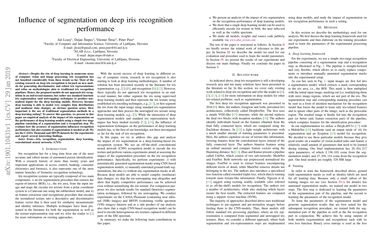Influence of segmentation on deep iris recognition performance
Despite the rise of deep learning in numerous areas of computer vision and image processing, iris recognition has not benefited considerably from these trends so far. Most of the existing research on deep iris recognition is focused on new models for generating discriminative and robust iris representations and relies on methodologies akin to traditional iris recognition pipelines. Hence, the proposed models do not approach iris recognition in an end-to-end manner, but rather use standard heuristic iris segmentation (and unwrapping) techniques to produce normalized inputs for the deep learning models. However, because deep learning is able to model very complex data distributions and nonlinear data changes, an obvious question arises. How important is the use of traditional segmentation methods in a deep learning setting? To answer this question, we present in this paper an empirical analysis of the impact of iris segmentation on the performance of deep learning models using a simple two stage pipeline consisting of a segmentation and a recognition step. We evaluate how the accuracy of segmentation influences recognition performance but also examine if segmentation is needed at all. We use the CASIA Thousand and SBVPI datasets for the experiments and report several interesting findings.
PDF Abstract
